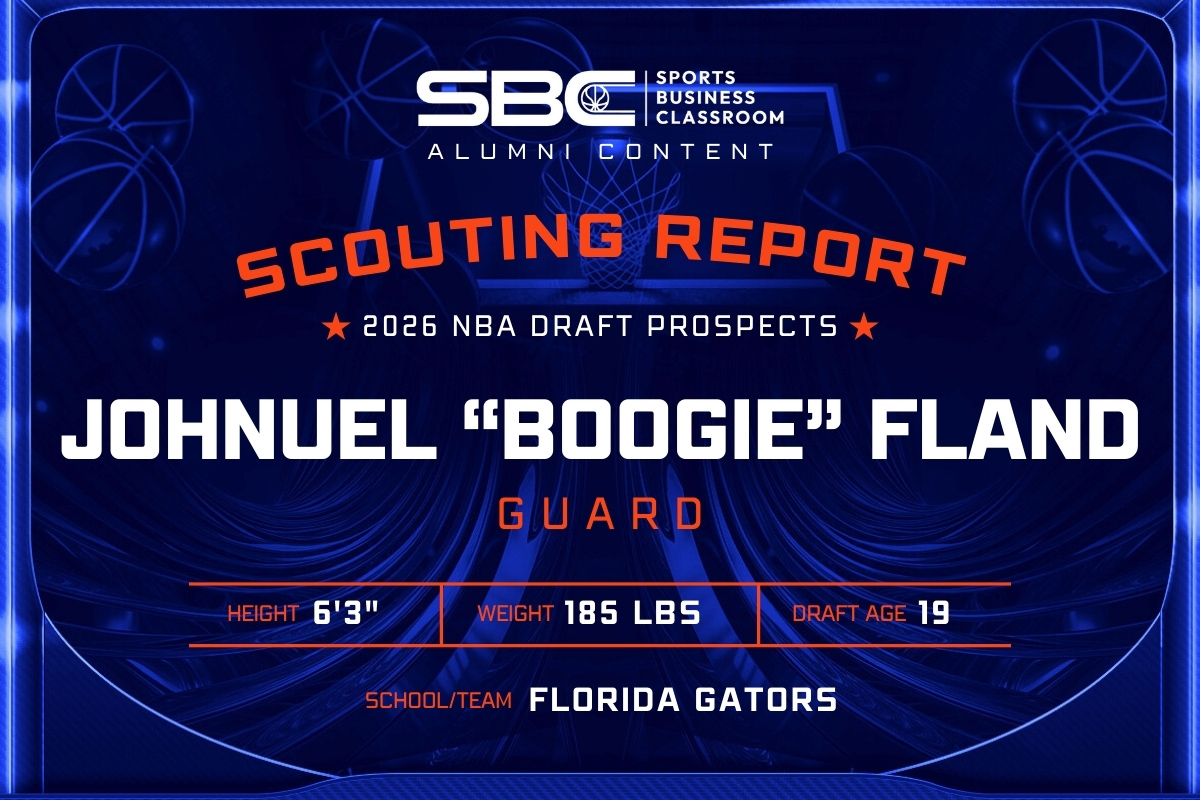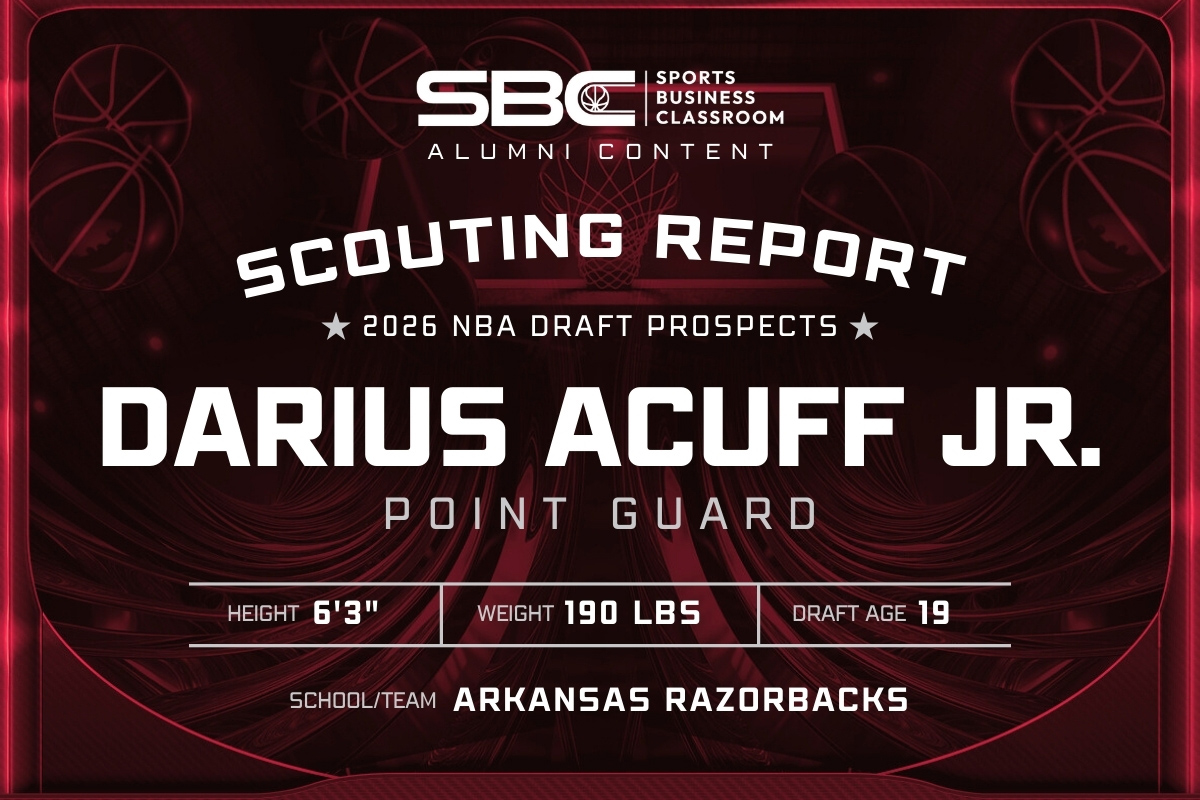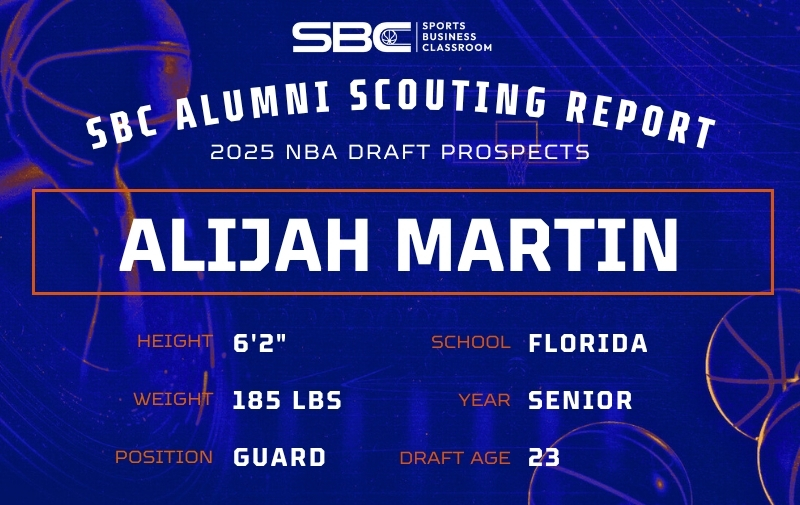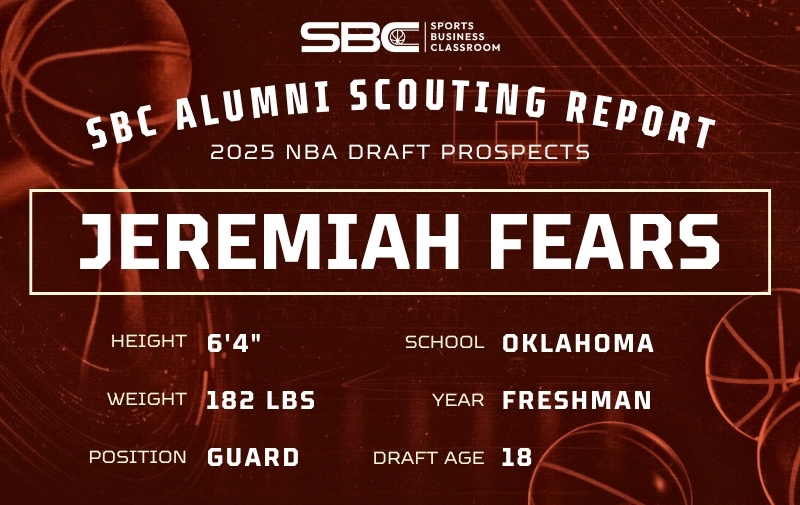
[The following scouting report is part of a series on potential 2024 draft prospects from Sports Business Classroom alumni.]
Harrison Ingram
Frame: 6’7″ 230 lbs
Position: Forward
Team: North Carolina Tar Heels
2024 Draft Age: 21
Stats via www.basketball-reference.com
Offense
Ingram’s draft stock has risen in his junior season due to his transformation as a three-point shooter. Last year for Stanford, Ingram shot 31.9 percent on 113 attempts, according to www.barttorvik.com. Now, with the Tar Heels, Ingram is shooting 39.5 percent on 124 attempts while being assisted on 95.9 percent. The changes to his shot are noticeable; he has a broader base, the elbow of his guide hand isn’t bent outward, and he doesn’t push the ball out on the release. These changes have allowed Coach Hubert Davis to weaponize Ingram as a shooter, running flares and relocating to get cleaner looks. In transition, Ingram has also taken a step as a threat, especially from above the break. He is often positioned in the weak side wing, providing space for the strong-side action and getting open looks on ball reversals from the guard or kickouts from the big.
The improved shooting mechanics have aided Ingram as a mid-range scorer as well. In 2023, he shot 37.5 percent on 96 attempts while being assisted on 13.9 percent of those shots. He has seen a jump in 2024 to 43.6 percent on 78 attempts while being assisted on 14.7 percent of those shots. This year, he is noticeably more confident rising into a pull-up off a ball screen. He often attacks closeouts and rises for his shot after taking one to two dribbles. He does a good job attacking smaller defenders and putting them on his back, often going to a push shot with his right hand to get a shot off. He has flashed a hook shot with his left as well.
Ingram has always struggled around the rim, which has carried over to North Carolina. He can need help finishing around suitable rim protectors since he’s not a plus vertical athlete. Tall, big men who contest Ingram straight up often give him the most trouble. Despite this, due to his stout frame, he has flashed the ability to finish through contact with either hand. However, this isn’t a consistent part of his game currently. Ingram always did an excellent job filling open spaces on the court and excelled as a cutter, which has also translated to North Carolina. He does a good job punishing smaller defenders and spinning off of them to get a clean look at the rim. He is shooting 48.8 percent at the rim on 82 attempts while being assisted on 25 percent.
Ingram’s passing has always been a strength in his collegiate career. He does an excellent job finding shooters open on the weak side when operating in the high post or the slot. He can make over-the-head passes or live dribble darts to hit the open man with his right hand. Ingram has shown to be able to find his bigs for dump-offs when driving as well due to being used more off-ball this season for the Tar Heels. Seeing his usage rate go from 25.4 percent in 2023 to a career-low 19.4 this year. This decrease in usage shows itself in his assist averages, where his assist percentage has gone from 26.4 percent last season to 12.1 percent this season and 3.7 assists per game to 2.7. However, this is not reflective of his talent as a playmaker.
His free throw shooting is another concern that has not remedied itself for Ingram (56.8 percent on 81 attempts). The changes to his shooting mechanics have been as seamless of a transition at the free throw line for Ingram. His guide hand elbow pokes out occasionally and sometimes pushes the ball—something to monitor at the next level.
Defense
Due to not being a quick athlete, Ingram needs help guarding in space against quicker ball handlers. Often, his footwork is slower than theirs, and his footwork is reactionary. He has shown the ability to leverage his strength against similar-sized wings to keep them in front of him; this applies to his post-defense, where Ingram uses his size to bother opposing players on the block. He does a good job picking the pocket of bigger ball handlers, poking the ball free right when they cross the ball over to their opposite hand. He averages 1.5 steals per game, with a steal percentage of 2.6 percent.
As a help defender, Ingram thrives on the strong side. He showcases excellent timing, plucking the ball from opposing players who drive on his side—frequently lulling a ball handler into a false sense of security and picking off their pass attempt to his man. Ingram isn’t as impactful as a weak side defender, and he’s prone to falling asleep (especially prevalent this year). When active, however, he can direct traffic and get through off-ball screens, which was especially noticeable during his first two seasons at Stanford. Ingram does not offer much weak-side rim protection, as he only averages 0.5 blocks per game, with a block percentage of 1.5 percent.
On the glass, Ingram’s size allows him to clear space and bang with more prominent players. He has sound knowledge of how to throw his weight around, good motor skills, and overall aggressiveness on the glass. Of Ingram’s 9.2 rebounds per game, 6.6 come on the defensive side.
Looking Ahead
The three-point explosion in his junior season has seen the once-projected first-round pick revive his draft stock. Ingram has become a weapon from behind the arc in an off-ball role under Davis. He’s a jack-of-all-trades with his connective playmaking and strong rebounding. Ingram’s age, free throw concerns, and positioning on the defensive end give many reasons for concern.
Ingram projects to be a mid-second-round pick in the 2024 draft, with the potential to rise with a good showing at the combine. He is seen as a solid reserve with the upside to become a fringe starter, depending on his defensive limitations and shooting consistency.







